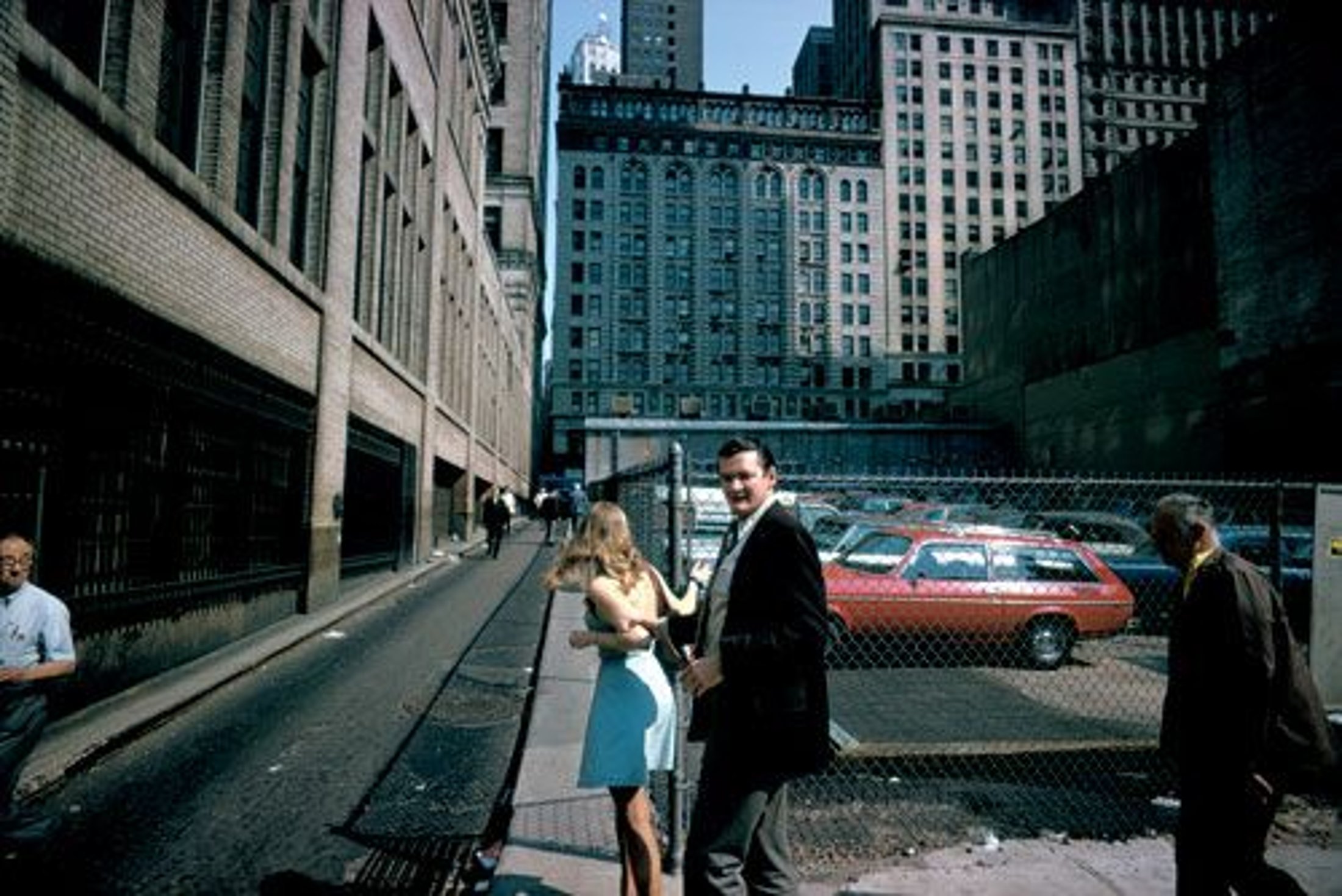This is the first European exhibition of the color
photography of Joel Meyerowitz.
The show offers a selection of photos taken between 1970 and 1980, a period
of what the photographer saw as radical and decisive change. Although
Meyerowitz had taken color photographs ever since the start of his career,
in 1962, it was only at the turn of the 1970s that he began working exclusively
in color. The 120 vintage or modern prints in the ensemble presented here
survey that vital decade that saw him questioning the medium, engaged
in aesthetic exploration and developing a new style of photography.
Here is Meyerowitz in his own words:
By the early 70’s color technology had advanced to the point where
one could make prints in the darkroom without the difficulties and expense
experienced in the 60’s. It was then that I committed myself entirely
to working in color. My reasoning was; if we accept the idea that a photograph
basically just describes things, then a color photograph describes more
things, that there is more content in color and I wanted to see what those
kinds of photographs might look like. At the same time I was beginning
to feel that there was more to photography than making good “catches”
of life on the streets, and that the contrapuntal tactics of Cartier-Bresson,
and the well timed, and gesture centered images of my own and my peers
was something I had to give up.
Because of using color my efforts on the street moved away from
the “caught” moment toward a more dispersed observation, toward
a non-hierarchical image in which everything played an equal role; the
people on the street, the architecture, the quality of the day, the angle
of the light, the weight of the shadows, the simultaneity of minor events.
This overall-ness I called, “field photographs.” I meant them
to be about the “experience” of being on the street, in that
specific city, on that day, in that precise season and year, so that viewers
might experience for themselves what it felt like in that moment. I hoped
that people might “read” the photograph rather than look for
an incident as the hook to lure one into the photograph.
Step by step I moved larger and then, suddenly, I bought an 8x10
inch view camera. This was antithetical to my whole way of thinking and
working. This was the camera those “old men” on the west coast,
Adams and Weston used, and I was a New Yorker, speed was my nature, the
jazzy riffs of street life were my milieu.
My rationale in this moment is that during this period I changed
from the quick, reflexive 35mm shooting of the urban scene and its complex
spaces, to the more meditative, spacious and luminous view camera work.
And that In fact, my behavior and my sense of time underwent a transformation
that deeply influenced my work from that time on.
Taken from an interview with Michaël Houlette, coordinator of the exhibition,
June 2005.

Feature
Joel Meyerowitz Color Work, 1970-1980, Changing Time
The work from just one decade in the evolution of a master of color photography, Joel Meyerowitz.
View Images
Feature
Joel Meyerowitz Color Work, 1970-1980, Changing Time
The work from just one decade in the evolution of a master of color photography, Joel Meyerowitz.
Joel Meyerowitz Color Work, 1970-1980, Changing Time
The work from just one decade in the evolution of a master of color photography, Joel Meyerowitz.


